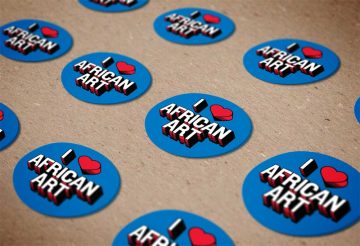

Ostafrikanische Schönheit (East African Beauty)
Zanzibar, Tanzania
Before 1900; colored collotype on postcard stock, c. 1912
Collection of Christraud M. Geary
The Swahili Coast, where Africa and the Indian Ocean intersect, has been a vibrant arena of global cultural convergence for more than a millennium. For centuries people journeyed on the Indian Ocean from the Arabian Peninsula, Asia, Europe, and many regions of Africa. Some settled in East Africa’s flourishing port towns, while others returned home with the seasonal shifts of the monsoon winds. The confluence of seafarers who populated the coast gave rise to its diverse communities, which together are often called “Swahili”—after the Arabic word meaning “edge” or “coast.”
Swahili arts emerge from this “world on the horizon”—a space of encounter and possibility, negotiation and struggle, that connects people on the Swahili Coast with faraway places. They have been shaped by these complex migrations across great distances, the formation of new empires, and the making and unmaking of communities and social identities. World on the Horizon explores Swahili arts through the lenses of mobility, encounter, trade, and imperialism. It brings together objects from different regions and periods into dialogue to reveal the movements of artistic forms, motifs, and preferences. The exhibition allows us to reflect upon the changing meanings the works may have carried during their histories.
The exhibition is organized in six thematic sections. It takes visitors into the streets and homes of Swahili port towns and beyond and highlights the arts of diplomacy and trade, the built environment and domestic interiors, society and fashion, and spiritual knowledge and pious devotion. The arts on view show how people brought, and continue to bring, the world home.
World on the Horizon: Swahili Arts Across the Indian Ocean is organized by Krannert Art Museum at the University of Illinois Urbana-Champaign and curated by Prita Meier and Allyson Purpura. The exhibition is made possible in part by major grants from the National Endowment for the Humanities: Exploring the Human Endeavor. Views, findings, conclusions, or recommendations expressed in this exhibition or accompanying publication do not necessarily represent those of the National Endowment for the Humanities. Additional sponsorship is provided by the Art Dealers Association of America Foundation Curatorial Award and the Association of Art Museum Curators, New York; and, from the University of Illinois at Urbana-Champaign, the College of Fine + Applied Arts Matching Funding Program and Creative Research Award, the Campus Research Board, and Krannert Art Museum.
Share your encounters with us #Swahiliworld
